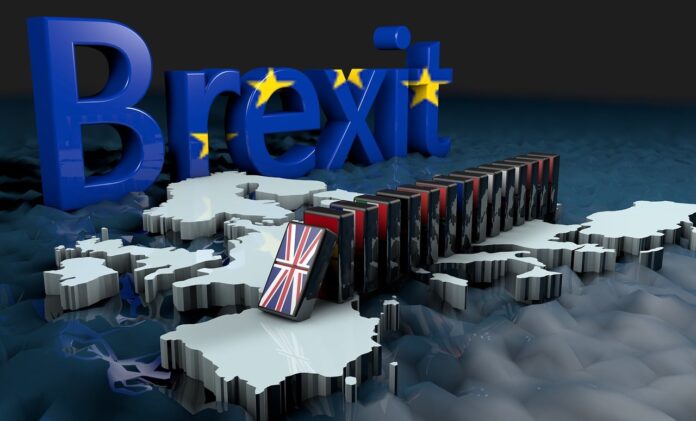Nine years after the UK’s historic vote to leave the European Union, Brexit remains a defining—and divisive—force in British life. As the country marks this uneasy anniversary, the question lingers: has the worst already passed, or is there more turbulence ahead?
**The Economic Reality Check**
Brexit’s economic impact has been largely negative, with most independent analyses pointing to slower growth, weaker trade, and reduced investment. The UK’s annual growth rate has halved since the referendum, dropping to around 1% from the 2–2.5% seen before the vote[9]. Business investment and foreign direct investment have stagnated, and the Office for Budget Responsibility estimates Brexit will shrink the UK economy by about 4% in the long run—roughly £100 billion in today’s terms[1][4][5][9].
Trade has been hit especially hard. UK goods exports are estimated to be 6–30% lower than if the country had stayed in the EU, with small businesses suffering disproportionately due to new cross-border regulations[1][4][6]. While service sectors like advertising and consulting have held up better, manufacturing and export-heavy regions continue to struggle[6].
**Cost of Living and Public Perception**
The cost of living crisis has deepened, with 67% of Britons in a recent poll blaming Brexit for rising prices[8]. Inflation, already exacerbated by global events, has been pushed higher by Brexit-related trade frictions and supply chain disruptions[5][9]. Public opinion has shifted: as of January 2025, 55% of people in Great Britain believe leaving the EU was a mistake, compared to just 30% who still support the decision[3][10]. Calls to rejoin the EU are growing louder, with some polls showing as many as 61% now in favor of rejoining[10].
**Labour Market and Immigration**
Brexit’s promise to “take back control” of borders has produced mixed results. Net migration has actually increased, reaching a record high of around 900,000 in 2023, driven by new visa routes and humanitarian arrivals[9]. Meanwhile, sectors reliant on EU workers—such as logistics, food processing, and agriculture—face chronic labor shortages, pushing up costs and reducing productivity[6][7].
**Trade Deals and Regulatory Divergence**
The UK has signed new trade deals with countries like Australia and New Zealand, but government assessments suggest these offer little to offset the losses from reduced EU trade[1][9]. Hopes that regulatory freedom would spark a wave of innovation and global competitiveness have yet to materialize, particularly in manufacturing[6]. Some economists argue that divergence from EU rules could eventually benefit sectors like artificial intelligence, but any gains remain speculative[1][9].
**Northern Ireland and Political Fractures**
The Northern Ireland Protocol continues to be a flashpoint, with trade barriers between Great Britain and Northern Ireland causing political and economic headaches[5]. The Good Friday Agreement faces renewed strain, and the risk of destabilization remains real.
Brexit has also fueled constitutional tensions within the UK. Scotland’s independence movement has been reinvigorated, and the unity of the United Kingdom is less secure than at any point in recent memory[7].
**Travel, Tourism, and Everyday Friction**
From April 2025, EU citizens will need electronic travel authorization to visit the UK, adding another layer of bureaucracy[2]. British travelers face more paperwork and delays when heading to Europe. Tourism, education, and scientific collaboration have all been disrupted by the end of freedom of movement and mutual recognition of qualifications[2][7].
**Is There Worse to Come?**
The UK’s post-Brexit adjustment is far from over. Several factors suggest that challenges may intensify:
– **Trade Barriers**: Customs checks and regulatory divergence are likely to deepen, especially if the UK moves further from EU standards[4][6].
– **Economic Drag**: The long-term drag on growth and investment is expected to persist, with little sign of a turnaround[1][5][9].
– **Political Instability**: Calls for a second referendum, Scottish independence, and ongoing disputes over Northern Ireland could destabilize the political landscape[7][10].
– **Public Discontent**: With living standards under pressure and most Britons now viewing Brexit negatively, social and political tensions may rise[3][8][10].
However, some see opportunities. The UK’s ability to set its own rules could, in theory, foster innovation in emerging sectors. But so far, the evidence for major Brexit-driven advantages is thin, and any future gains are likely to be incremental rather than transformative[1][9].
**Conclusion**
Nine years on, Brexit has delivered more disruption than renewal. The economic costs are real and ongoing, public support for Brexit has eroded, and the country faces a period of prolonged adjustment. While it is possible that the worst is yet to come—especially if political or economic shocks compound existing problems—there remains a chance for the UK to stabilize and adapt. Much will depend on whether future governments can reset relations with the EU, invest in domestic strengths, and manage the social and political fallout. For now, the legacy of Brexit is one of uncertainty and unfinished business—and the answer to whether there is worse to come remains uncomfortably open[1][5][6][7][9].












